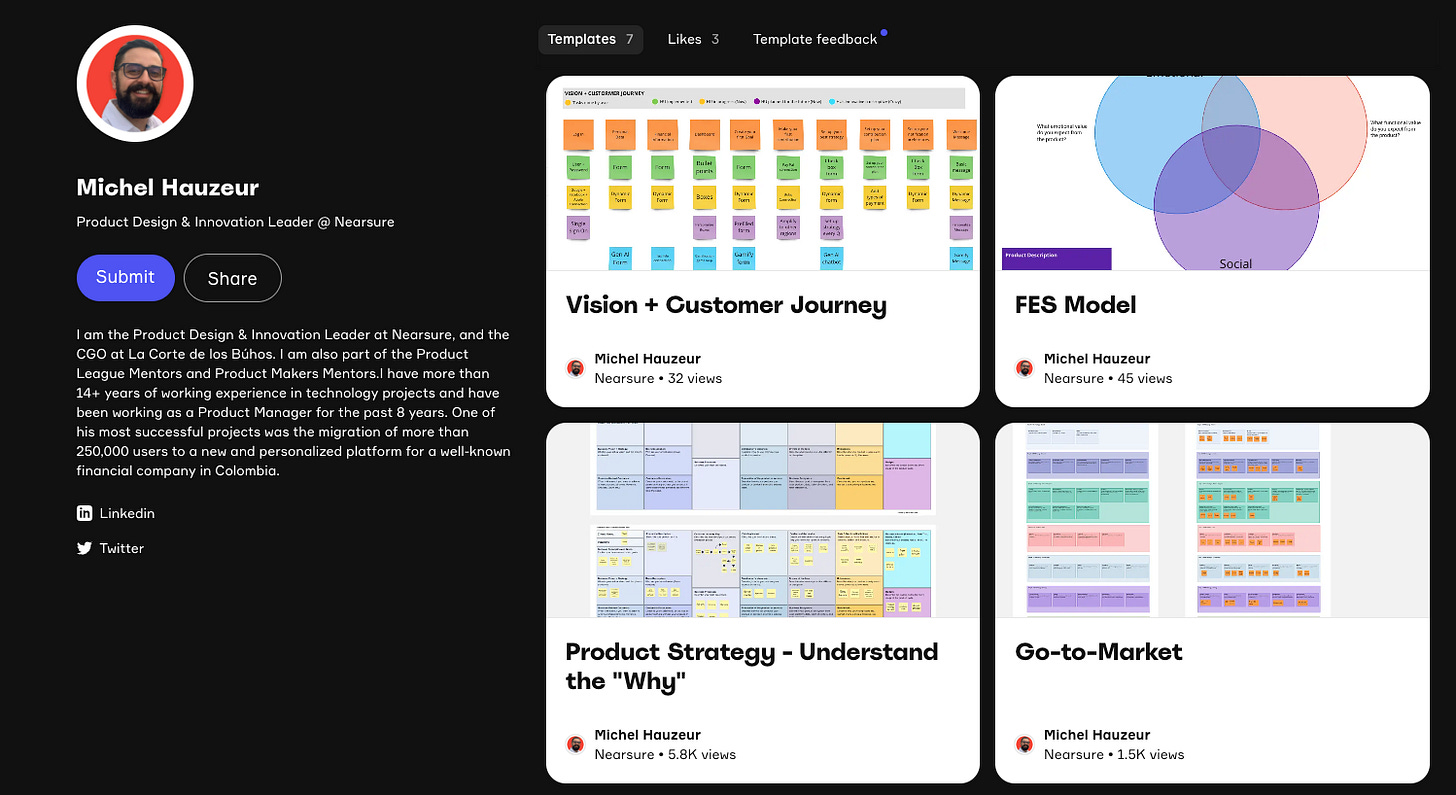NotebookLM Chapters Resume - How to create a team structure based on innovation and experimentation
This is the resume of the six chapter journey I wrote to share my experience around team building.
Hi readers, my name is Michel Hauzeur, and I am a soccer lover and a father of my little warriors called Mila, Maya, and Baloo (rescued dog)
Currently Product Design & Innovation Leader at Nearsure with 14+ years of experience in product & tech. I’m also a Co-founder of La corte de los Búhos, a Digital Transformation consulting company in Latam, and a Gamification consultant.
Mentor in the Product League and Product Makers Mentors program for 2+ years.
And 2023 Product-Led Alliance Award as Product Leader of the Year winner.
If you want to read the six chapters:
If you want to listen or read the synopsis the six chapters with NotebookLM from Google Labs:
Chapter 1: Understand the Why:
NotebookLM Synopsis: This excerpt, the first chapter of a six-part guide on building an innovative and experimental team structure, focuses on understanding the "why" behind the author's quest. It presents the personal story of Michel Hauzeur, who, driven by a desire to build a cohesive and effective product team, outlines five key areas he wants to address: team structure, career paths, processes, new services, and sales collaboration. To answer the "why" behind each of these, Hauzeur emphasizes the importance of clear metrics and using frameworks like the "Understand the Why Template" and "Opportunity Solution Tree." He then illustrates how these frameworks can be applied to each area by defining specific metrics and desired outcomes. This process is presented as a vital first step toward developing a well-defined strategy in the subsequent chapters.
NotebookLM Audio:
Chapter 2. Research and Hypothesis Validation
NotebookLM Synopsis: This Substack post is the second chapter in a six-part series titled "How to create a team structure based on innovation and experimentation," outlining Michel Hauzeur's approach to structuring teams for innovation. Chapter 2 focuses on "Research and hypothesis validation." Hauzeur begins by reiterating his five key goals, which include creating a product team, defining processes, designing a career path, defining services, and working with sales. He then utilizes a "Understand the Why" template to define the company's objectives, vision, desired outcomes, product/service descriptions, users, impacted processes, distribution channels, enablers, data, and budget. This information is then used to formulate hypotheses related to team structure, career path, processes, new services, and sales. The final section involves the "Opportunity Solution Tree", where Hauzeur identifies a problem, potential opportunities, and solutions. The author ultimately decides to implement a "team structure based on practices and innovation" as an experiment, the details of which are explored in the subsequent chapter.
NotebookLM Audio:
Chapter 3: Team Building Validation
NotebookLM Synopsis: This is an excerpt from a six-part series on creating a team structure that fosters innovation and experimentation. This particular chapter, Chapter 3, focuses on the process of validating a newly designed team structure. It outlines the team's journey, which began with identifying a problem—low revenue generation—and evolved into a bold solution: implementing a team structure based on career paths, growth, and innovation. The author, Michel Hauzeur, details the challenges of transitioning from a smaller team to a larger one, with an emphasis on establishing clear roles, interactions, and a mentor program to support team members' development. The chapter concludes with a discussion of the early results of the new structure and sets the stage for the next chapter, which explores further iteration and refinement.
NotebookLM Audio:
Chapter 4: Team Building Implementation
NotebookLM Synopsis: This article is the fourth chapter of a six-part series focused on building a team structure that fosters innovation and experimentation. The author, Michel Hauzeur, outlines the implementation of the team structure introduced in the previous chapter. He details the iterative process, including the use of a mentor program, Studio Sync meetings, and a practice assessment. The author then discusses the feedback and insights gathered during the implementation, highlighting challenges such as time constraints for coaches and mentors. To address these issues, Hauzeur presents an "Opportunity Solution Tree" framework and proposes two A/B tests as solutions. Finally, the article concludes by explaining the upcoming experiment that will be conducted to evaluate the effectiveness of the proposed solutions, setting the stage for the next chapter which will focus on the Center of Excellence definition.
NotebookLM Audio:
Chapter 5: Center of Excellence Definition
NotebookLM Synopsis: This excerpt comes from the fifth chapter of a six-chapter Substack series titled "How to Create a team structure based on Innovation and Experimentation." The author, Michel Hauzeur, details his journey in developing an organizational structure that fosters innovation. This chapter specifically focuses on the creation and evolution of a "Center of Excellence" (CoE). He outlines his initial vision for the CoE as a group of specialized teams dedicated to fostering innovation through research, communication, training, strategy, proposal development, and experimentation. Despite the initial success with a smaller team, Hauzeur identifies challenges when scaling the model to a larger team. He introduces the role of "Product Ops" to manage communication, roadmaps, and alignment across the CoE teams. The chapter concludes by discussing the first iteration of the CoE, acknowledging its shortcomings, and highlighting the insights gained from employee surveys and feedback sessions. Hauzeur concludes by hinting at a new iteration of the CoE that will be discussed in the final chapter, emphasizing the continuous learning and improvement inherent in his approach to organizational design.
NotebookLM Audio:
Chapter 6: Innovation and Experimentation Through Team Building
NotebookLM Synopsis: This Substack post, the sixth and final chapter in a series about team structure, focuses on the vital connection between innovation and experimentation in team building. Michel Hauzeur, a Product Design & Innovation Leader, argues that innovation is a cyclical process of identifying problems, developing solutions, and iterating upon them until optimal value is reached. He then emphasizes that experimentation is the only way to truly foster innovation. Hauzeur cautions against fear of experimentation and encourages readers to start small and gradually scale up their efforts. He emphasizes that successful experiments are those that demonstrably improve business outcomes, highlighting the importance of data-driven decision-making. The post concludes with a recap of the series, emphasizing the importance of aligning a team's efforts with a clear strategy and iterating on that strategy to achieve continuous growth.
NotebookLM Audio:
This is the framework that is coming this month!
Thanks for following me and keep reading!!
Next topics I will be writing about:
Career Path for Product Managers
How does gamification impact business results?
What are the behavior core drives that gamification tries to work with?
The relation between gamification and personalization.
The relation between gamification and Product-Led Growth.
The are four pillars a Market Place should be built on.
Wait for more…
Check here my new templates in Miroverse
Don´t close this tab before sharing this content.
I think of myself as a product, so please leave a comment so I can keep improving my content. Thanks!






